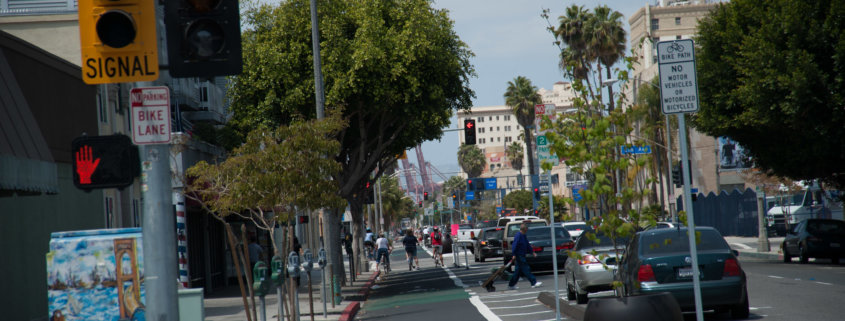CalBike Works with Caltrans to Move Complete Streets Forward
In 2024, with help from our allies and thousands of CalBike supporters, we passed the Complete Streets Bill, SB 960, requiring Caltrans to add or upgrade facilities for people biking and walking when they repair state routes that serve those travel modes. Passing the bill was just the first step; as we’ve seen with the rollout of California’s new daylighting law, lack of implementation, based on so-called lack of funding, can get in the way of the effectiveness of new safety regulations. So, CalBike is working with Caltrans to ensure the agency takes active transportation safety seriously and better implements Complete Streets on its highways.
Sitting down with Caltrans
Last week, we met with Caltrans’ leadership, including Acting Complete Streets Lead Advisor Susan Lindsay and other key executives, to discuss progress toward implementing SB 960.
Every project in Caltrans’ State Highway Operation and Protection Program (SHOPP) that isn’t on a limited-access freeway should be evaluated for active transportation and transit infrastructure needs. In fact, many state routes run through neighborhoods and serve as local streets where people walk, bike, and take the bus.
Caltrans outlined some plans to implement its Complete Streets policy during projects on those routes and comply with SB 960. These include transparency: Caltrans will post justifications for recommended Complete Streets elements included or excluded from projects online. Caltrans has a form to document this for each project, but it hasn’t been available to the public. In 2023 and 2024, CalBike had to make public records requests to obtain the project records we reviewed for our Incomplete Streets report. We commend Caltrans for taking this step.
There will also be more accountability within Caltrans. Rather than district personnel making the final decision about new bikeways or sidewalks, leading to large variations in implementation among Caltrans districts, high-level staff from headquarters will review cases where district staff have not included recommended Complete Streets elements in SHOPP projects. This formalization of the exception to the Complete Streets policy is meant to narrow allowable exceptions and streamline application across districts. Caltrans will also report on this to the California Transportation Commission, which oversees funding for the program.
Caltrans reporting
In addition to these reporting and transparency steps, as well as several other new policies, Caltrans is undertaking a review of the 2026 SHOPP projects that had recommended Complete Streets elements. This is similar to the analysis CalBike did of the 2024 projects, and the agency has promised to share its findings with us. When CalBike released our Incomplete Streets report, we had statistics that Caltrans hadn’t compiled internally, and we’re glad to see the agency take up the practice.
CalBike plans to keep reviewing and analyzing Caltrans SHOPP project documents to double-check its progress on Complete Streets. Caltrans has offered quarterly meetings with CalBike to share information and input on the process to provide Complete Streets for all users.
Working with Caltrans has always been part of CalBike’s mission. Our agency work is less visible than our legislative advocacy, but it’s no less important. So, when you see a new crosswalk or protected bikeway on a Caltrans-maintained road in your neighborhood, you can thank the Complete Streets Bill and CalBike’s advocacy for Caltrans to step up since 2008, as well as tireless advocacy from local partners, that brings the changes to the street level.



